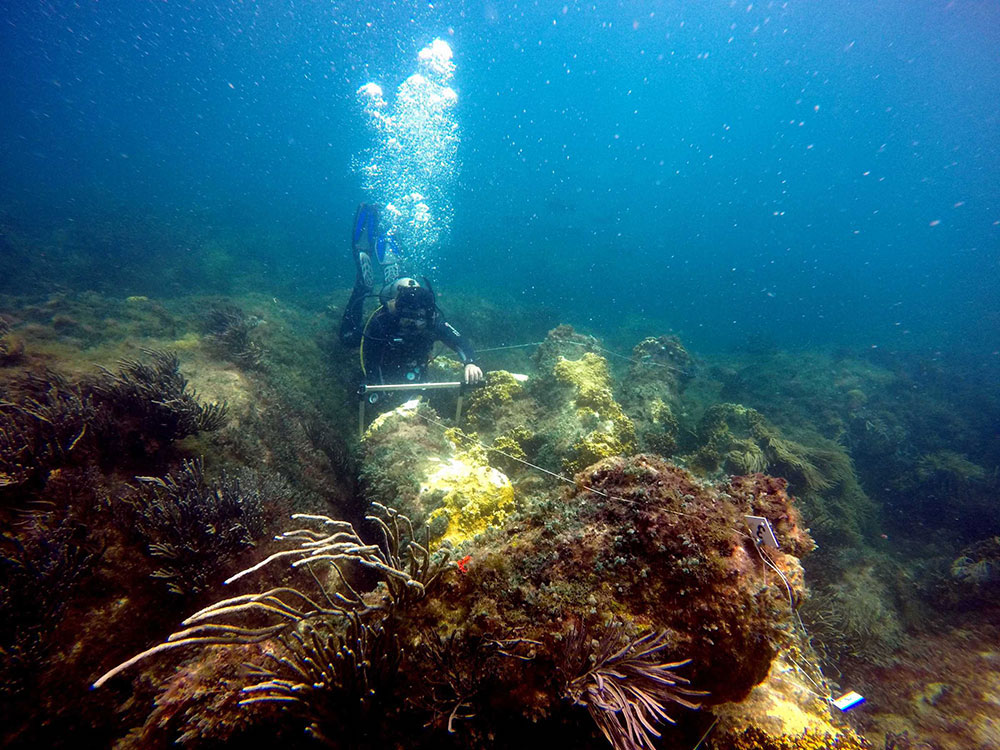Wreck of Dutch Warship Found Buried Beneath Coral

Divers in the blue waters around the Yucatán Peninsula have discovered three historic treasures: a sunken lighthouse and the remains of an 18th-century Dutch warship and a 19th-century British steamer, according to Mexico's National Institute of Anthropology and History (INAH).
The battered wrecks were found near the coastal town of Sisal, Mexico, a modern beach destination that was once a bustling port in the 18th and 19th centuries.
The shipwrecks were laden with artifacts, including cannons, cutlery and porcelain, said archaeologist Helena Barba Meinecke, head of the INAH's underwater archaeology of the Yucatán Peninsula. [Mayday! 17 Mysterious Shipwrecks You Can See on Google Earth]
The Dutch warship — dubbed the "Madagascar Cannons," because its cannons were found near the Madagascar reef, about 25 miles (40 kilometers) northwest of Sisal — is partly buried under 6 inches (15 centimeters) of coral.
"We recorded in drawing, photography and video a total of 12 iron cannons whose dimensions — 2.5 meters long by almost half a meter in diameter [8 feet by nearly 2 feet] — bear a resemblance to the artillery of the Dutch war frigates that sailed the West Indies in the 18th century," Barba Meinecke said.
The crew might have thrown four of these cannons overboard in an attempt to save the ship from sinking, she added.
About 60 feet (19 m) southeast of these cannons, archaeologists found another eight cannons and eight cannonballs, as well as ceramic fragments. It appears that these artifacts sunk at once, indicating that this was the spot where the Dutch warship met its untimely end, Barba Meinecke said.
Get the world’s most fascinating discoveries delivered straight to your inbox.
The wreck is mentioned in a 1722 letter from Antonio de Cortaire, the governor of the Yucatán, in which he ordered a review of lookouts on the northern coast of the territory after learning that two Dutch warships carrying contraband merchandise had sunk in February of that year. In the note, he said that treacherous "north winds" were likely to blame and that the Dutch and English crews had been rescued and taken to Sisal.
However, it's unclear which of the two warships researchers have uncovered. INAH archaeologists are now examining the ship's contents in an effort to crack the puzzle, Barba Meinecke said.
The second shipwreck — a Mississippi-style steamboat from the United Kingdom — was nicknamed Vapor Adalio, in honor of the grandfather of Juan Diego Esquivel, a local fisherman who showed the wreck to archaeologists. The steamer, which was likely built between 1807 and 1870, wrecked on the Scorpion Reef (known as "Arrecife Alacranes" in Spanish) in the 1800s, the archaeologists said.
Within the ship's remains, archaeologists found signs of everyday life aboard the steamer: eight eating utensils.
Diego Esquivel also led archaeologists to the wrecked lighthouse, located about 2 miles (3.7 km) from Sisal. The structure, which was built in the late 19th century, stood 26 feet tall (8 m) and served as a lookout point. However, it likely crumbled into the gulf after a tropical storm hit the region, the archaeologists said.
Original article on Live Science.

Laura is the managing editor at Live Science. She also runs the archaeology section and the Life's Little Mysteries series. Her work has appeared in The New York Times, Scholastic, Popular Science and Spectrum, a site on autism research. She has won multiple awards from the Society of Professional Journalists and the Washington Newspaper Publishers Association for her reporting at a weekly newspaper near Seattle. Laura holds a bachelor's degree in English literature and psychology from Washington University in St. Louis and a master's degree in science writing from NYU.


